
How to Use ULN 2003: Examples, Pinouts, and Specs
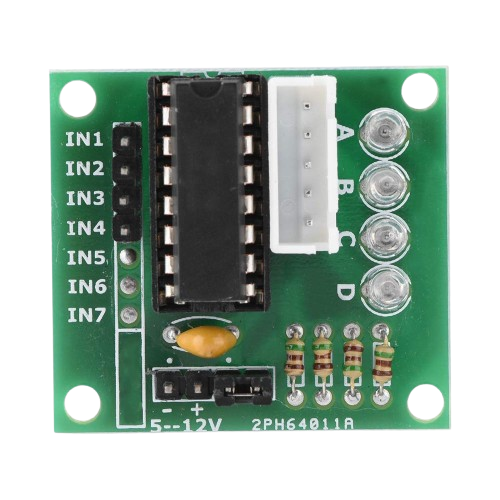
 Design with ULN 2003 in Cirkit Designer
Design with ULN 2003 in Cirkit DesignerIntroduction
The ULN 2003 is a high-voltage, high-current Darlington transistor array manufactured by ULN. It contains seven NPN Darlington pairs, each capable of driving high-current loads up to 500 mA per channel. The component is widely used for interfacing low-power control circuits, such as microcontrollers, with high-power loads like stepper motors, relays, and LEDs. It also includes built-in flyback diodes to protect against voltage spikes when driving inductive loads.
Explore Projects Built with ULN 2003
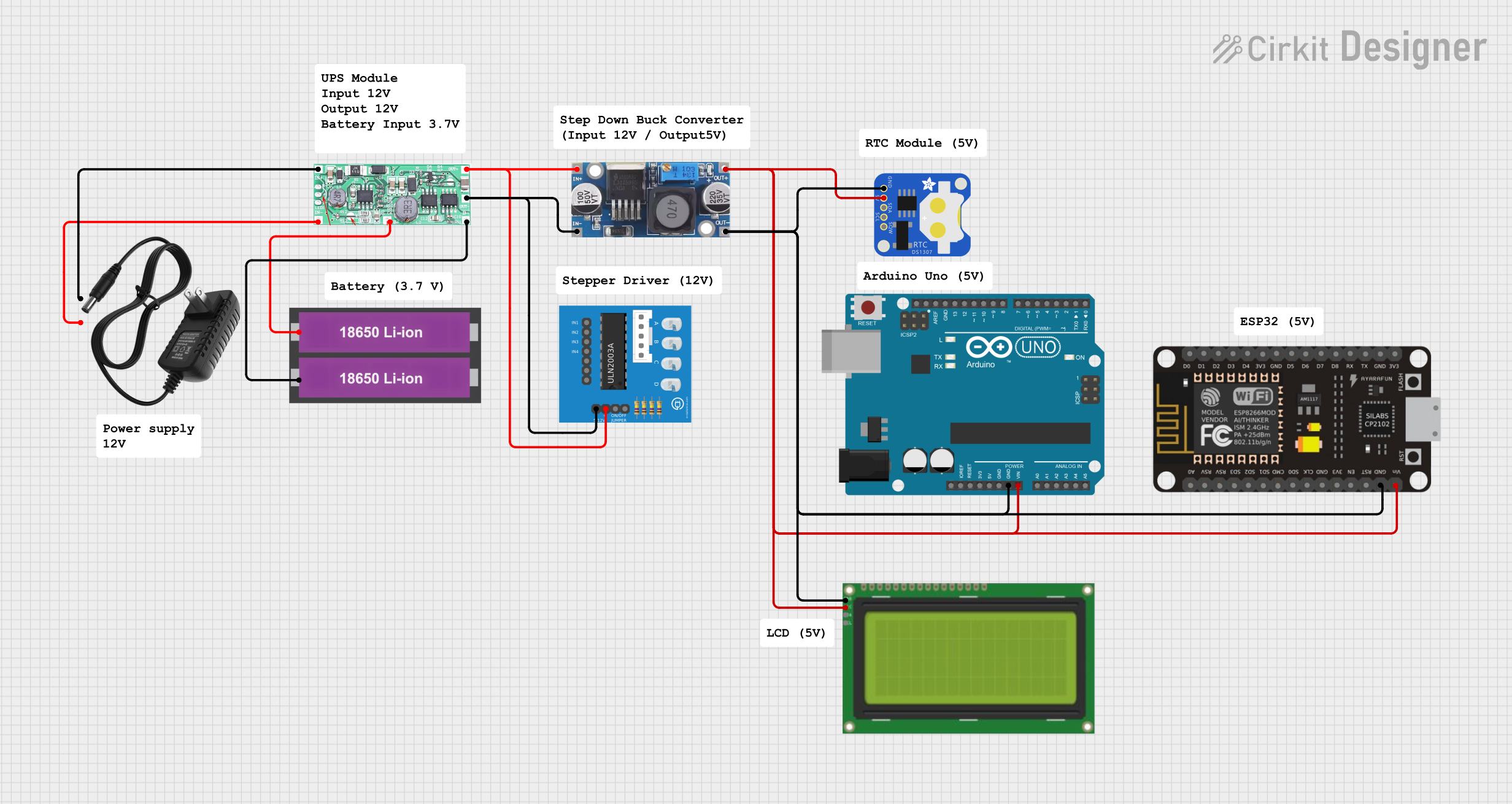
 Open Project in Cirkit Designer
Open Project in Cirkit Designer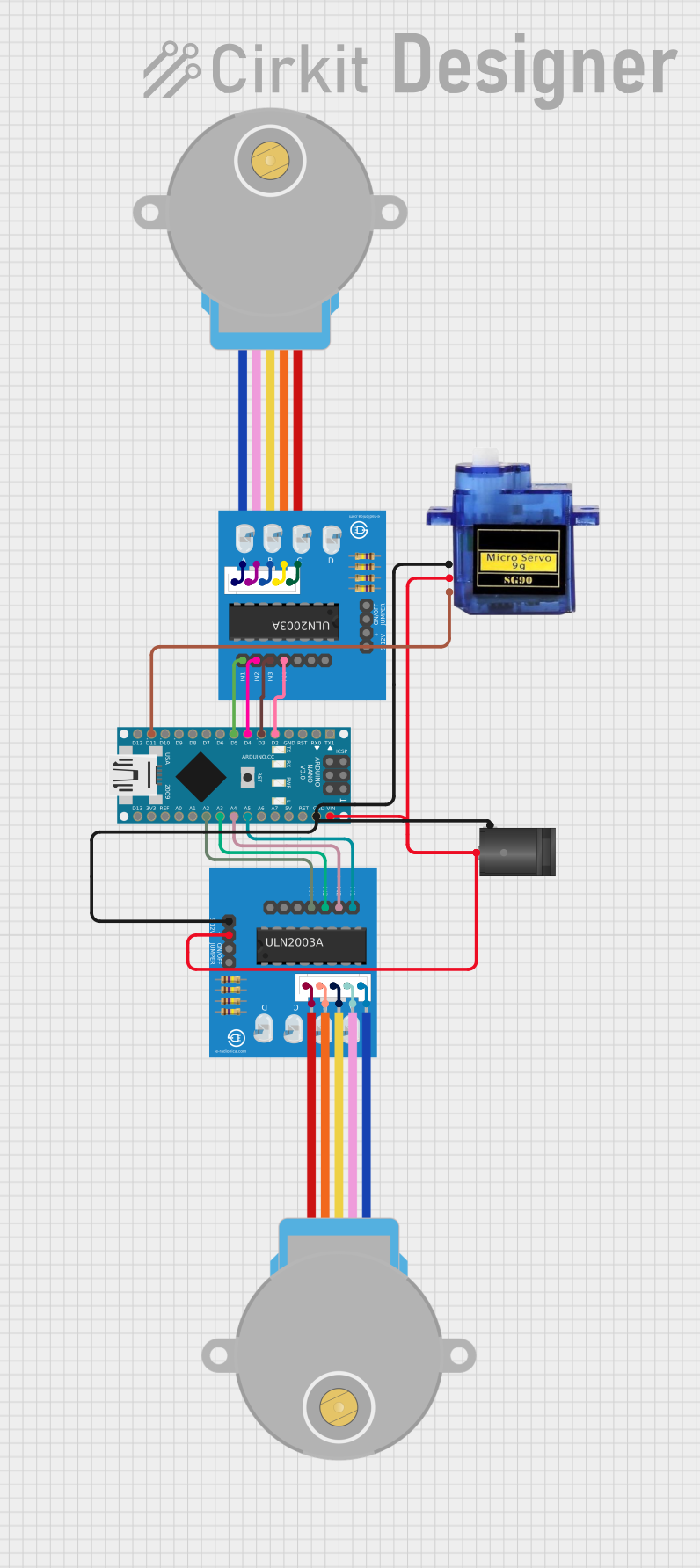
 Open Project in Cirkit Designer
Open Project in Cirkit Designer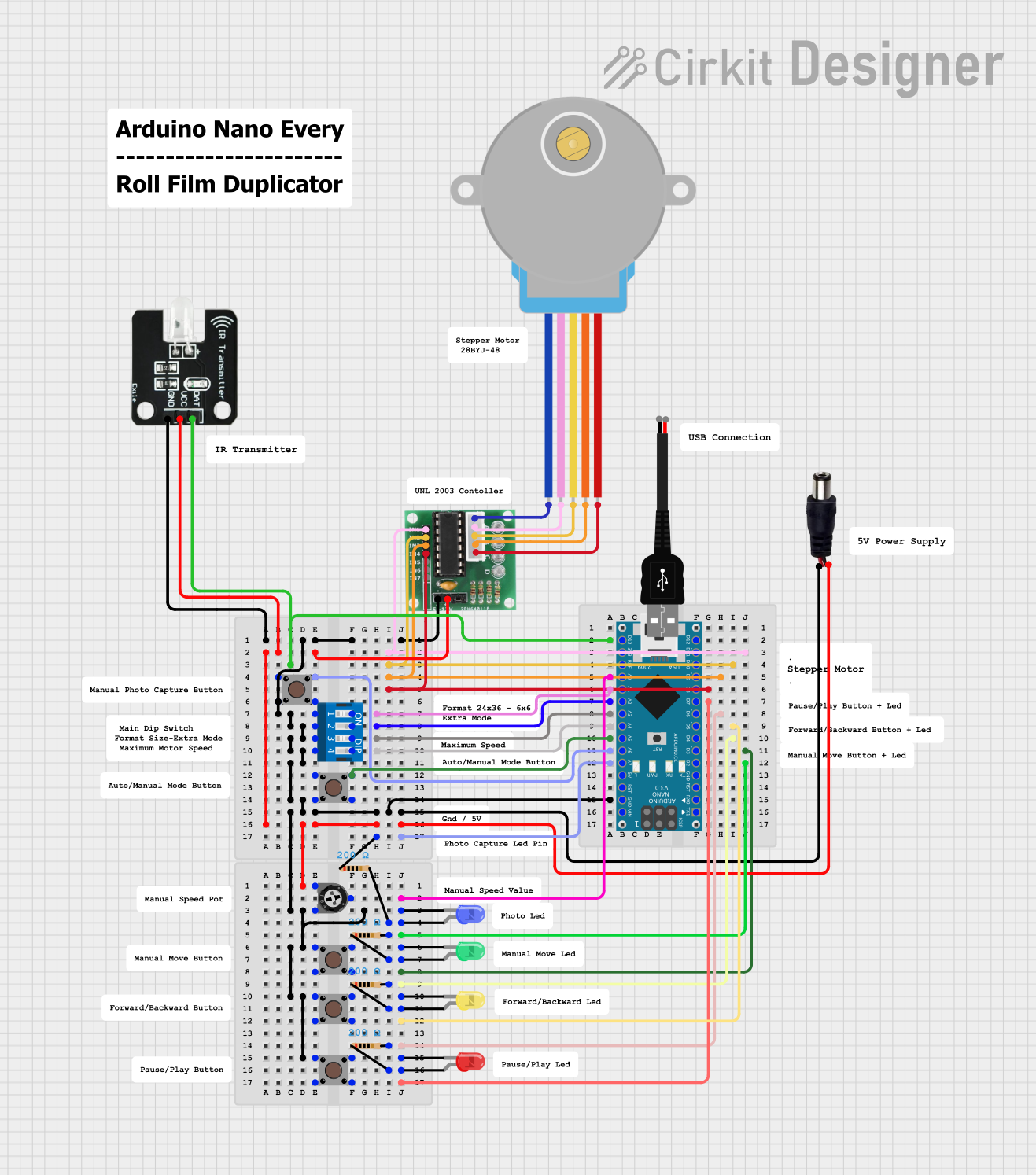
 Open Project in Cirkit Designer
Open Project in Cirkit Designer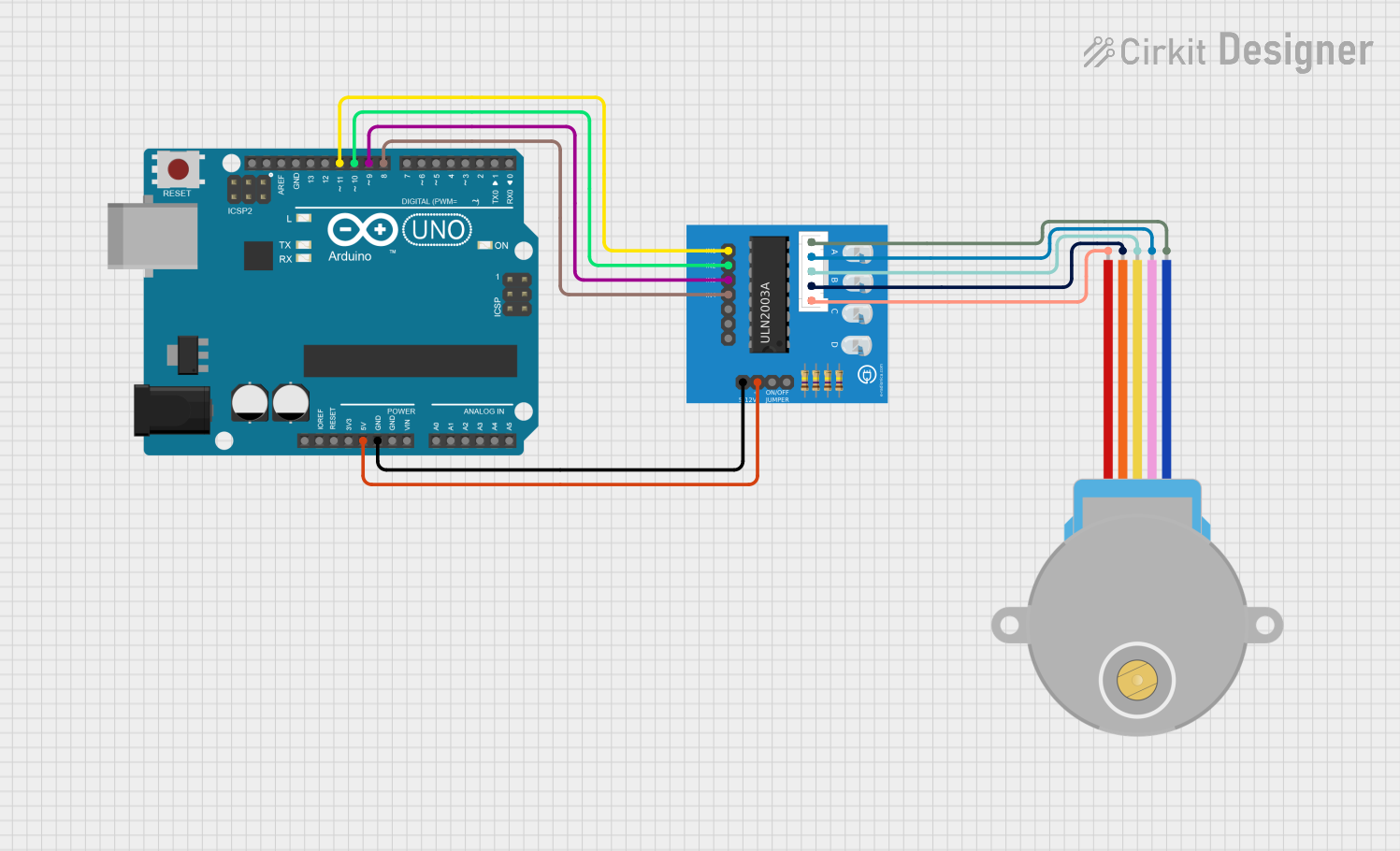
 Open Project in Cirkit Designer
Open Project in Cirkit DesignerExplore Projects Built with ULN 2003

 Open Project in Cirkit Designer
Open Project in Cirkit Designer
 Open Project in Cirkit Designer
Open Project in Cirkit Designer
 Open Project in Cirkit Designer
Open Project in Cirkit Designer
 Open Project in Cirkit Designer
Open Project in Cirkit DesignerCommon Applications and Use Cases
- Driving stepper motors in robotics and automation systems
- Controlling relays in industrial and home automation
- Powering LED arrays in display systems
- Interfacing microcontrollers with high-current loads
Technical Specifications
The ULN 2003 is designed to simplify the control of high-current loads by providing a robust interface between low-power control signals and high-power devices.
Key Technical Details
- Operating Voltage: Up to 50 V
- Output Current: 500 mA per channel (maximum)
- Number of Channels: 7
- Input Voltage: Compatible with TTL and CMOS logic levels
- Built-in Protection: Flyback diodes for inductive load protection
- Package Type: DIP-16 or SOP-16
Pin Configuration and Descriptions
The ULN 2003 has 16 pins, with the following configuration:
| Pin Number | Name | Description |
|---|---|---|
| 1-7 | Input 1-7 | Logic-level inputs for controlling the corresponding output channels. |
| 8 | GND | Ground connection for the device. |
| 9-15 | Output 1-7 | High-current outputs for driving loads. |
| 16 | COM (Common) | Common cathode connection for the internal flyback diodes (connect to V+). |
Usage Instructions
The ULN 2003 is straightforward to use in circuits, especially for driving stepper motors or other high-current loads. Below are the steps and considerations for using the component effectively.
How to Use the ULN 2003 in a Circuit
- Connect the Inputs: Connect the input pins (1-7) to the control signals from a microcontroller or other logic-level device.
- Connect the Outputs: Connect the output pins (9-15) to the load (e.g., motor, relay, or LED).
- Power Supply: Connect the common pin (COM) to the positive terminal of the load's power supply. This ensures proper operation of the internal flyback diodes.
- Ground Connection: Connect the GND pin (8) to the ground of the power supply and the control circuit.
- Logic Levels: Ensure the input logic levels are compatible with the ULN 2003 (TTL or CMOS).
Example: Driving a Stepper Motor with Arduino UNO
The ULN 2003 is commonly used to drive stepper motors. Below is an example of how to connect and control a stepper motor using an Arduino UNO.
Circuit Diagram
- Connect the ULN 2003 inputs (pins 1-4) to Arduino digital pins (e.g., D8-D11).
- Connect the ULN 2003 outputs (pins 9-12) to the stepper motor coils.
- Connect the COM pin (16) to the motor's power supply (e.g., 12V).
- Connect the GND pin (8) to the Arduino GND.
Arduino Code
// Example code to control a stepper motor using ULN 2003 and Arduino UNO
#include <Stepper.h>
// Define the number of steps per revolution for your stepper motor
#define STEPS_PER_REV 200
// Initialize the Stepper library with the ULN 2003 pins
Stepper stepper(STEPS_PER_REV, 8, 10, 9, 11);
void setup() {
// Set the speed of the stepper motor (in RPM)
stepper.setSpeed(60);
Serial.begin(9600);
Serial.println("Stepper Motor Control Initialized");
}
void loop() {
// Rotate the motor one full revolution clockwise
Serial.println("Rotating clockwise...");
stepper.step(STEPS_PER_REV);
delay(1000); // Wait for 1 second
// Rotate the motor one full revolution counterclockwise
Serial.println("Rotating counterclockwise...");
stepper.step(-STEPS_PER_REV);
delay(1000); // Wait for 1 second
}
Important Considerations and Best Practices
- Power Dissipation: Ensure the total power dissipation does not exceed the device's maximum rating.
- Flyback Diodes: Always connect the COM pin to the load's power supply to enable the internal flyback diodes.
- Heat Management: If driving multiple high-current loads, consider adding a heat sink to prevent overheating.
- Input Logic Levels: Verify that the input logic levels are within the specified range for reliable operation.
Troubleshooting and FAQs
Common Issues and Solutions
Problem: The load is not turning on.
- Solution: Check the input signal levels and ensure they are within the specified range. Verify the connections to the load and power supply.
Problem: The ULN 2003 is overheating.
- Solution: Ensure the total current does not exceed the maximum rating. Add a heat sink if necessary.
Problem: Voltage spikes are damaging the circuit.
- Solution: Verify that the COM pin is connected to the load's power supply to enable the internal flyback diodes.
Problem: The stepper motor is not rotating correctly.
- Solution: Check the wiring of the stepper motor coils and ensure the correct sequence is being sent from the microcontroller.
FAQs
Can the ULN 2003 drive a DC motor? Yes, the ULN 2003 can drive a DC motor, but ensure the motor's current and voltage are within the component's limits.
What is the maximum current per channel? The maximum current per channel is 500 mA.
Do I need external diodes for inductive loads? No, the ULN 2003 has built-in flyback diodes for inductive load protection.
Can I use all seven channels simultaneously? Yes, but ensure the total current does not exceed the device's maximum power dissipation.
This documentation provides a comprehensive guide to using the ULN 2003 effectively in various applications.